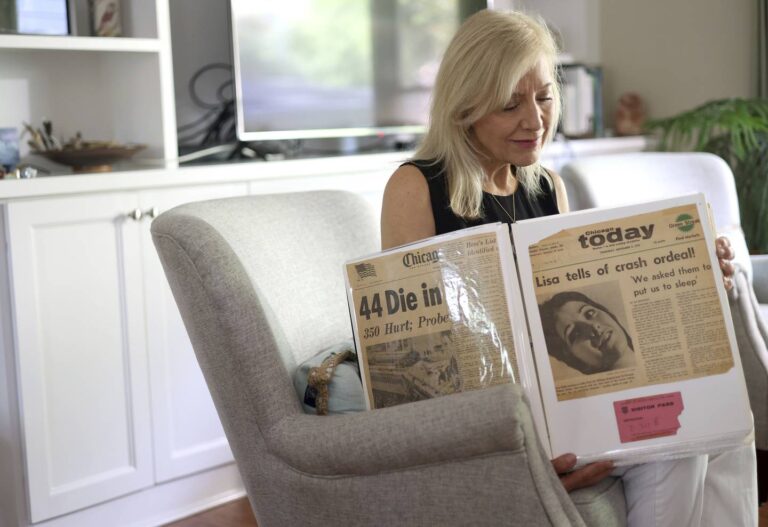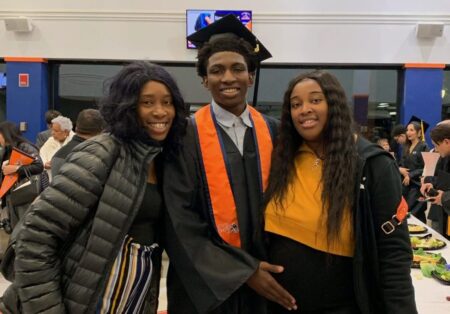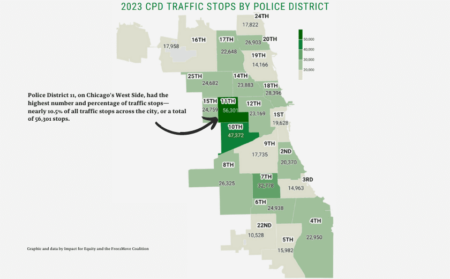On a chilly autumn morning, Lisa Klare embarked on a Loop-bound commuter train ride and made her way to the first car because one of her friends wanted to smoke.
The Illinois Central electric train, an old model with concrete floors and wicker passenger seats, had started its journey north to downtown at the 91st Street station on that gloomy Oct. 30, 1972.
Advertisement
It trailed another Illinois Central commuter train ridden by then 23-year-old Louise Lawarre, who even now remembers the start of the ride with precision. She got on the train at the 53rd Street platform, sat in the upper deck of her preferred last car and opened J.R.R. Tolkien’s “The Two Towers.”
Shortly after, the train Lawarre rode in missed its stop at the 27th Street station. It was put into reverse and sped backward around a curve.
Advertisement
The trailing train, where Klare chatted with a friend in the first car, also barreled around the curve.
Lawarre had just started her book. Klare had grabbed her friend’s cigarettes and pocketed them, telling him — eerily, it turned out — the cigarette he smoked would be his last.
Then, Klare got a split-second warning, as the conductor yelled the train would crash. She remembers her friend leaning forward.
Their trains — an older six-car train and a more modern four-car one — collided at 7:27 a.m. in a crash that killed 45 people and injured 332 others. News accounts described a scene of screaming passengers, mangled bodies and people staggering out of the wreck.
Decades later, survivors interviewed by the Tribune describe a life lived in the shadow of the crash. They mourn friends who died and wonder why they lived. They think about the outsize impact of small decisions or random twists of fate, such as choosing where to sit or last minute schedule changes that landed them on that train. Some still carry injuries and have endured multiple surgeries.
They don’t want Chicago to forget.
Lawarre and Klare didn’t know each other at the time the trains collided. But they connected more than two decades later when a story about Lawarre ran in the Tribune during another anniversary.
The women yearned for someone to talk to who could understand what they went through and exchanged some correspondence.
Advertisement
With the 50th anniversary in October, Lawarre got back in touch with Klare in the hopes that they can find a way to mark the event.
“Why did I survive? Why me and not them? That becomes a life altering and life challenging question to carry,” Lawarre said.
A surgeon from Michael Reese Hospital was one of the first doctors on the crash scene, which was less than 100 yards from the now-closed hospital.
“Human limbs were hanging out the windows,” Dr. Edward Goldberg told the newspaper in a story printed Oct. 31, 1972. “There was one 22-year-old fellow whose heart stopped, but he was revived. About the only thing doctors and nurses could do at the scene was apply tourniquets and splints, and give sedatives.”
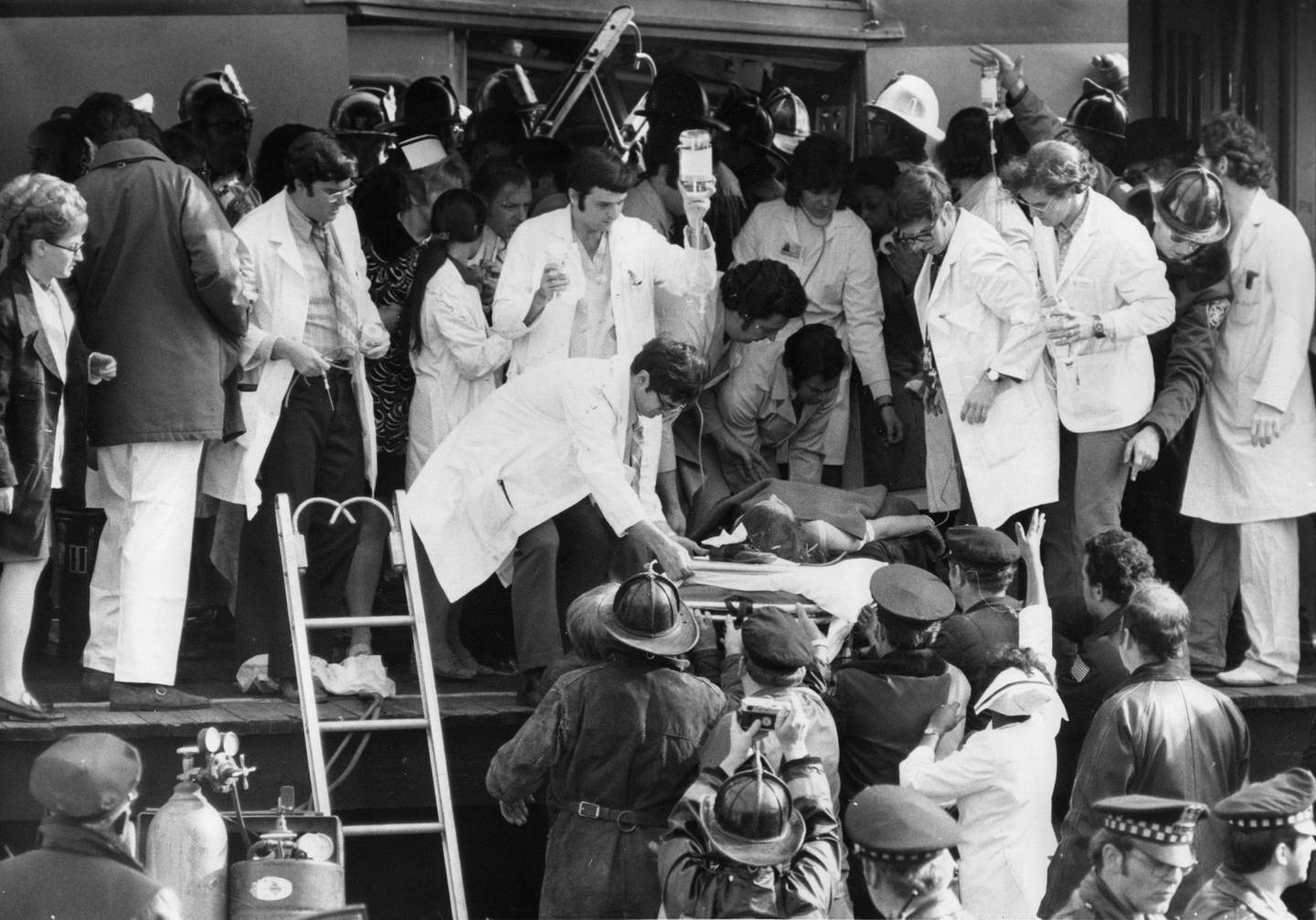
The train platform was transformed into an outdoor hospital, the paper reported, as emergency crews and personnel from the nearby medical center came to help. Together, the two trains carried nearly 1,000 people, with most of the dead and seriously injured in the rear car of the first train, media reports said.
Mayor Richard J. Daley was an early visitor to the area and ordered flags be flown at half-staff. The National Transportation Safety Board responded and President Richard Nixon sent his transportation secretary to the scene.
Advertisement
An NTSB report issued the following year said the crash was due to the reversal of the first train while the engineer of the second train, who was traveling faster than the advised speed, failed to perceive it in time to stop and avoid the collision. The report also said “ambiguous rules” regarding the signal system also contributed.
Lawarre rode the train that day to commute to her downtown job, but she wasn’t initially supposed to do so that Monday morning. She had landed a job interview at the University of Chicago near her home in Woodlawn, but it was rescheduled, so she took the Monday morning train to her job instead.
When it crashed, she was in a semi-conscious state that felt more like a dream. The new mother worried about her 5-month-old even though the newborn had not been with her and was safely elsewhere.
Elsewhere in that train car, Kathy Bennett, then 18, chatted with a friend from school who was also headed downtown, she recalled for the Tribune this month.. The friend invited Bennett to sit with her and her sister in the back of the car to continue catching up. But it was a dreary morning and Bennett didn’t feel like socializing. She stayed where she was.
The friend and her sister were killed.
In the other train, Klare, who was a high school senior going downtown for a work-study program, heard the conductor yell his warning as she rode with two friends.
Advertisement
Constantine Lamperis, 18, the friend whose cigarettes she had taken away, was killed, though Klare didn’t know that right away. He was a neighborhood friend who had worked in a local burger joint. He went by Dean and was the only child of a widow. A newspaper account of his death recorded another cruel irony: A month earlier, Lamperis purchased a life insurance policy and told his mother in jest that she would be rich if he died in an accident.
Klare and her other friend were trapped.
Crews sought to keep them awake by chatting with them about school and boyfriends. At one point, a priest came to give them last rites, frightening Klare’s friend.
“No, no he just needs practice,” someone told the girls to calm them down.
After about six-and-a-half hours, the girls were freed from the wreckage.
“Each of them, when we finally got to them, insisted that the other girl be taken out first,” a doctor who responded to the scene told a reporter at the time.
Advertisement
The two girls, according to newspaper accounts, were the last two survivors extricated.
After the crash, Kathy Bennett eventually went back to work in a downtown building on the 21st floor with a big window. She recalls watching window washers one day, working up high above the city on scaffolding. She saw the cable come loose and watched horrified as the men tumbled to the sidewalk.
But then she snapped out of it. She stared out the window. The men were safe on the scaffolding, unremarkably wiping the windows clean.
“I would do that,” Bennett said. “I would see accidents happen.”
PTSD and trauma-informed care were less understood back then. Bennett pushed forward. She married and had two boys.
Lawarre experienced something akin to survivor’s guilt. The car she rode in experienced the most catastrophic effects of the crash.
Advertisement
But her feelings have evolved to a “deep wonder at the processes of life,” she said.
She lovingly refers to the anniversary as the “I’m glad I didn’t die day,” but it’s not a light or jolly statement.
It’s a true statement, but many people did die, so Lawarre says it with “the humility of recognizing that for whatever moment of fate” she sat toward the front of the train car rather than the back.
Lawarre has physical reminders of the crash too. She has visible dirt embedded in her forehead and a scar across her belly.
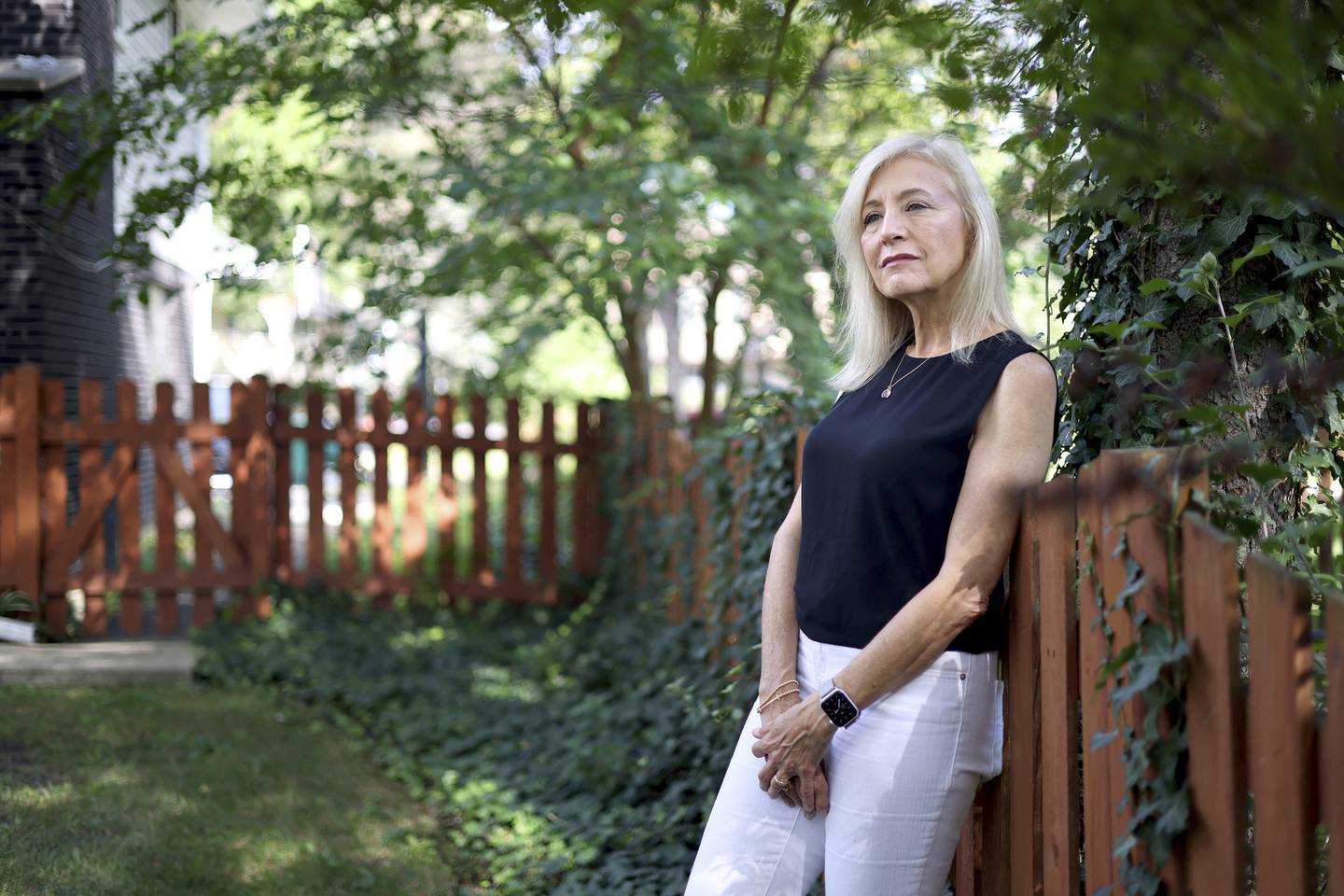
Klare has had many surgeries since the crash; she continues to suffer from chronic pain and have difficulty with her ankles after both were injured.
“I almost can’t remember what my life was like before,” Klare wrote to a reporter, describing the impact the crash has had on her life. She couldn’t run or hike afterward. Scars made her self-conscious to bare her legs.
Advertisement
She remembers the humanity-affirming moments too. Klare received letters from people all over the world. Fannie Mae candy was sent to the hospital in droves.
Over the years, Lawarre, Klare and Bennett yearned to talk to other survivors. No one else could truly know what they had gone through.
After the Chicago Tribune ran a 25th anniversary story about Lawarre, Klare sent her a letter and the women corresponded, Lawarre said.
Bennett also connected with Lawarre years ago. The first time they spoke by phone, they talked for three hours, Bennett said.
“It’s so hard to explain to somebody,” she said. “It changed me, who I am and how I look at things.”
This year, Lawarre was compelled to mark the anniversary more publicly. She reconnected with Klare and Bennett to discuss a commemoration. Lawarre now lives in Ohio, but she has been in touch with staff members from Ald. Sophia King’s 4th ward office. She hopes for a public resolution and possibly a plaque somewhere in the city.
Advertisement
Lawarre has scheduled a service at First Unitarian Church of Chicago at 5650 S. Woodlawn Ave. at 3 p.m. on Oct. 30. It is open to the public and she hopes people attend.
“This was a collective tragedy and I think it deserves to be recognized collectively,” Lawarre said.
Prentice Butler, chief of staff for King, and other staff are working on a resolution to bring to the City Council that would formally mark the anniversary.

Vintage Chicago Tribune
Weekly
The Vintage Tribune newsletter is a deep dive into the Chicago Tribune’s archives featuring photos and stories about the people, places and events that shape the city’s past, present and future.
“We’re making sure we memorialize this tragic event and make sure history remembers what happened,” Butler said.
At 42, Butler is too young to remember the crash, but he grew up near the train line and heard stories.
Illinois Central is now defunct and the train line is run by Metra. The Metra Electric trains run on that track.
Advertisement
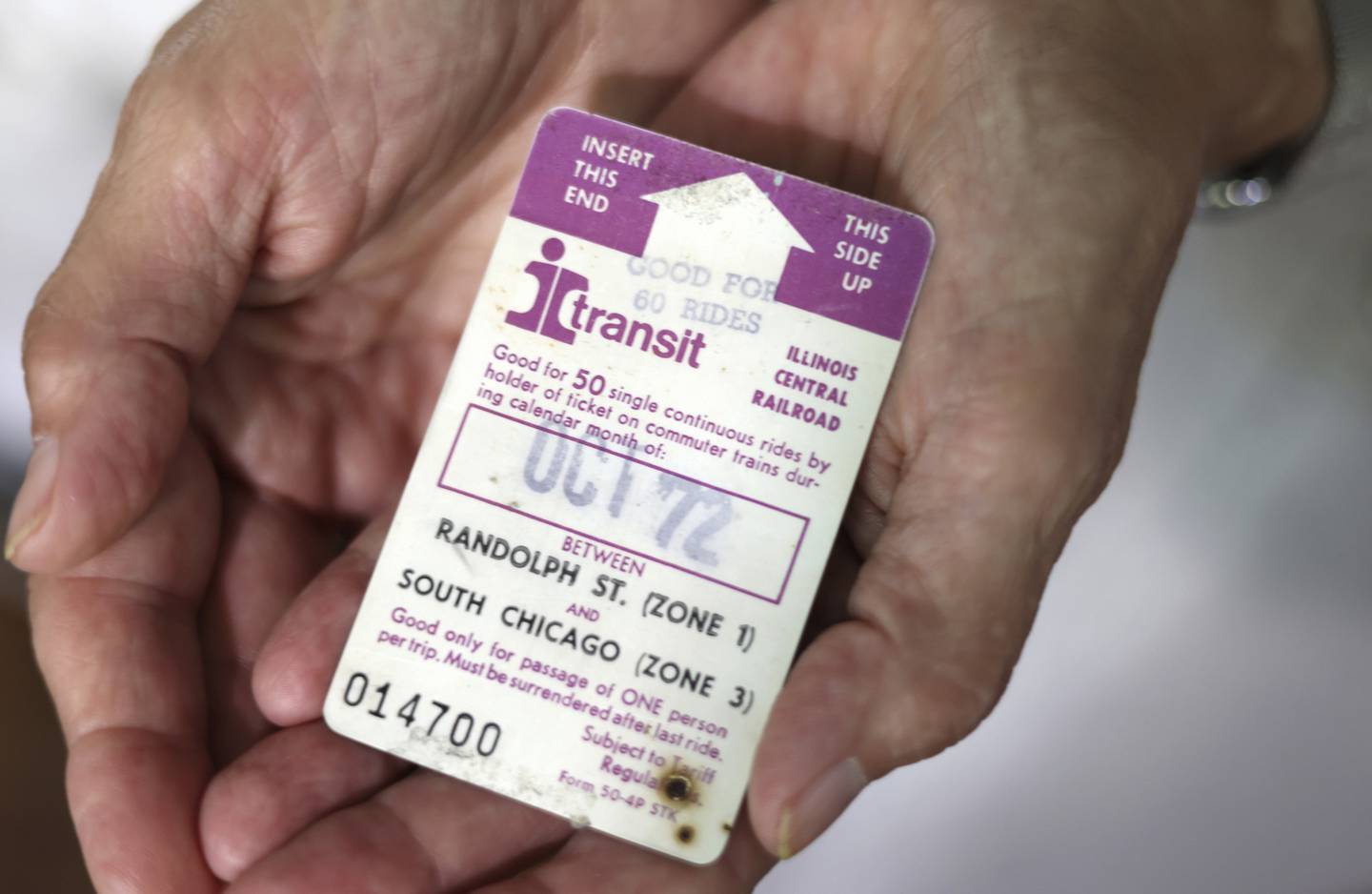
Butler said the office has also been in touch with Metra to see what might be possible in regards to a memorial. A Metra spokesperson said the agency is looking into the matter.
“It just feels like it deserves to be remembered. … Maybe I feel like I owe it to those people, someone owes it to those people, the city owes it to those people,” Lawarre said.
Chicago Tribune’s Marianne Mather contributed.
mabuckley@chicagotribune.com




